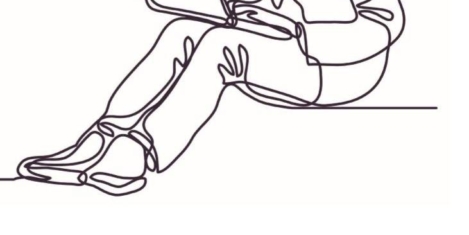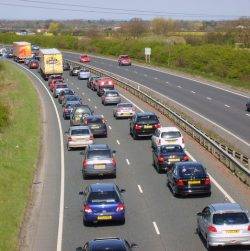February 9, 2018
London office market is booming and proving resilient in the face of Brexit
 A new report from Knight Frank claims that activity in the office market in London increased sharply last year, which the property adviser said was driven largely by growing demand from the UK’s burgeoning tech sector. The report said office leasing activity in central London hit 13.84 million sq ft last year, more than 2 million sq ft than in 2016. Knight Frank said it had seen ‘extraordinary demand’ for London offices from the Technology, Media and Telecommunications (TMT) sector. However, the report also claims that there is now a lack of quality office space supply because, despite the fact that more than 259 development schemes are under construction in Central London, 187 are residential, and of the remaining 72 offering commercial space, only two-thirds are available to lease, with many of them already pre-let to office tenants.
A new report from Knight Frank claims that activity in the office market in London increased sharply last year, which the property adviser said was driven largely by growing demand from the UK’s burgeoning tech sector. The report said office leasing activity in central London hit 13.84 million sq ft last year, more than 2 million sq ft than in 2016. Knight Frank said it had seen ‘extraordinary demand’ for London offices from the Technology, Media and Telecommunications (TMT) sector. However, the report also claims that there is now a lack of quality office space supply because, despite the fact that more than 259 development schemes are under construction in Central London, 187 are residential, and of the remaining 72 offering commercial space, only two-thirds are available to lease, with many of them already pre-let to office tenants.









 Demand for office space in Scotland’s three largest cities pushed overall take-up beyond 2m sq ft last year, aided by a solid final quarter of occupational deals in Aberdeen and Glasgow, and an all-time record year for Edinburgh. Scotland’s offices market in 2017 reach ed2.4 million sq ft, 14 percent above the 10 year average, according to the latest Scottish Office Spotlight from Savills. In Edinburgh (city centre and wider market) office take-up amounted to a record 1.1 million sq ft boosted by the ongoing growth of tech in the city. According to data from Stack Overflow, the Scottish capital saw a 19 percent increase in data scientists employed in the city centre over the course of 2017. Activity places further pressure on supply with only 220,000 sq ft of Grade A now available which Savills suggests will push top rents to £34 per sq ft in 2018. Keith Dobson, director in the business space agency team at Savills in Edinburgh, says: “The soon to be completed 40,000 sq ft office scheme at 2 Semple Street will ease pent up demand come Q2 2018, whilst The Mint Building and Capital Square will complete in 2019 and 2020 respectively.”
Demand for office space in Scotland’s three largest cities pushed overall take-up beyond 2m sq ft last year, aided by a solid final quarter of occupational deals in Aberdeen and Glasgow, and an all-time record year for Edinburgh. Scotland’s offices market in 2017 reach ed2.4 million sq ft, 14 percent above the 10 year average, according to the latest Scottish Office Spotlight from Savills. In Edinburgh (city centre and wider market) office take-up amounted to a record 1.1 million sq ft boosted by the ongoing growth of tech in the city. According to data from Stack Overflow, the Scottish capital saw a 19 percent increase in data scientists employed in the city centre over the course of 2017. Activity places further pressure on supply with only 220,000 sq ft of Grade A now available which Savills suggests will push top rents to £34 per sq ft in 2018. Keith Dobson, director in the business space agency team at Savills in Edinburgh, says: “The soon to be completed 40,000 sq ft office scheme at 2 Semple Street will ease pent up demand come Q2 2018, whilst The Mint Building and Capital Square will complete in 2019 and 2020 respectively.”
 Less than a quarter (23 percent) of employees feel completely informed about the values of the organisation they work for and just 19 percent of employees feel completely informed about their employer’s corporate mission claims a new survey by Reward Gateway. These statistics are even more problematic when you consider that 83 percent of employers say it’s critical to the success of their business that employees understand their mission. Recognition is one of the key drivers needed to ingrain employees with a company’s values and corporate mission, however, 40 percent of employees don’t agree that their employer recognises them when they demonstrate the values their company cares about. Furthermore, the study has found a break-down of communication and trust between employees and their employers. 81 percent of senior decision makers say that their organisation is transparent with employees about how they plan to achieve the company mission. However, only 22 percent of employees say they strongly agree that they trust their employer to communicate information openly and honestly.
Less than a quarter (23 percent) of employees feel completely informed about the values of the organisation they work for and just 19 percent of employees feel completely informed about their employer’s corporate mission claims a new survey by Reward Gateway. These statistics are even more problematic when you consider that 83 percent of employers say it’s critical to the success of their business that employees understand their mission. Recognition is one of the key drivers needed to ingrain employees with a company’s values and corporate mission, however, 40 percent of employees don’t agree that their employer recognises them when they demonstrate the values their company cares about. Furthermore, the study has found a break-down of communication and trust between employees and their employers. 81 percent of senior decision makers say that their organisation is transparent with employees about how they plan to achieve the company mission. However, only 22 percent of employees say they strongly agree that they trust their employer to communicate information openly and honestly.
 Half of employers believe that Brexit will worsen the UK skills gap and nearly a quarter (23 percent) believe that Britain is not prepared to compete on the global stage, which will become even more important following the UK’s exit from the European Union in 2019. These are the findings of a research paper entitled “Solving the UK Skills Shortage” from Rober Walters, totaljobs and Jobsite which claims that almost two thirds of employers (65 percent) believe that they will be negatively impacted by skills shortages in 2018, with this shortage predicted to be most acute at junior and mid management level according to over half (52 percent) of employers. According to the research, employers may have to look to different industries to find the transferable skills that are essential to grow. This means that there will be more opportunities for skilled candidates to use their knowledge and experience in different sectors, providing them with new challenges and opportunities in industries that they may not have considered before.
Half of employers believe that Brexit will worsen the UK skills gap and nearly a quarter (23 percent) believe that Britain is not prepared to compete on the global stage, which will become even more important following the UK’s exit from the European Union in 2019. These are the findings of a research paper entitled “Solving the UK Skills Shortage” from Rober Walters, totaljobs and Jobsite which claims that almost two thirds of employers (65 percent) believe that they will be negatively impacted by skills shortages in 2018, with this shortage predicted to be most acute at junior and mid management level according to over half (52 percent) of employers. According to the research, employers may have to look to different industries to find the transferable skills that are essential to grow. This means that there will be more opportunities for skilled candidates to use their knowledge and experience in different sectors, providing them with new challenges and opportunities in industries that they may not have considered before.








 Most people who work in HR now recognise how essential technology is for delivering more strategic value to their organisation, but a new report suggests that HR teams are not prepared to meet the
Most people who work in HR now recognise how essential technology is for delivering more strategic value to their organisation, but a new report suggests that HR teams are not prepared to meet the 


 Concern amongst small and medium sized enterprises (SMEs) regarding the current economic climate fuelled by worries over a Brexit-related skills shortages, is at a three-year high, according to the latest Zurich SME Risk Index. It now sits at 56.38, indicating almost a 2 percent rise in perceived risk since Q1 2016 (55.43), and more than 3 percent higher than in October 2016 (54.55). SMEs attitudes towards economic growth, presently sits at a four-year low – with just two in five (40 percent) businesses confident that the UK economic situation will improve over the next 12 months. Similarly, the results regarding SMEs attitudes towards the international trade environment, reveals concern regarding overseas competition and currency rate fluctuations being at its highest in four years at 45.49. Equally, workforce challenges, namely the availability of skills and talent, is also an increasing concern for smaller businesses. Two in five (40 percent) SMEs now see workforce challenges as a major concern for their business; a rise of 8 per cent since October 2016, indicating that political issues are a major influence on the current attitudes of business owners in the UK.
Concern amongst small and medium sized enterprises (SMEs) regarding the current economic climate fuelled by worries over a Brexit-related skills shortages, is at a three-year high, according to the latest Zurich SME Risk Index. It now sits at 56.38, indicating almost a 2 percent rise in perceived risk since Q1 2016 (55.43), and more than 3 percent higher than in October 2016 (54.55). SMEs attitudes towards economic growth, presently sits at a four-year low – with just two in five (40 percent) businesses confident that the UK economic situation will improve over the next 12 months. Similarly, the results regarding SMEs attitudes towards the international trade environment, reveals concern regarding overseas competition and currency rate fluctuations being at its highest in four years at 45.49. Equally, workforce challenges, namely the availability of skills and talent, is also an increasing concern for smaller businesses. Two in five (40 percent) SMEs now see workforce challenges as a major concern for their business; a rise of 8 per cent since October 2016, indicating that political issues are a major influence on the current attitudes of business owners in the UK.







